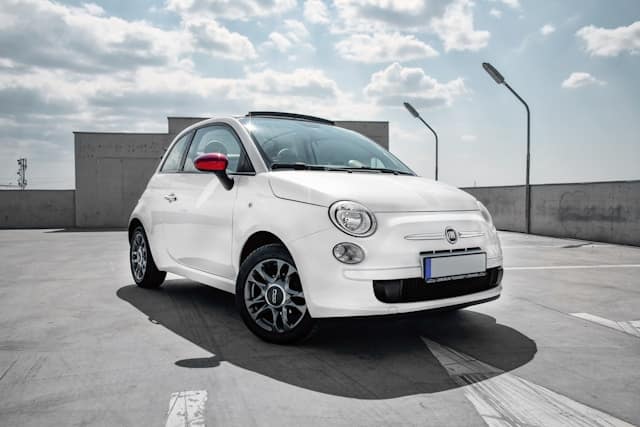Abarth Spider, originally produced by Fiat, is a vehicle synonymous with speed, power, and performance. With its turbocharged engine and sleek design, this sports car stands out from the crowd and offers a thrilling, unparalleled driving experience. But beyond the engine roar and the adrenaline rush in every gear change, an important factor in car performance is often overlooked – braking.
The automotive aficionados among you will agree that enhancing the braking performance of a car can drastically improve the overall driving experience. For those of you who are passionate about your Abarth Spider, this article will provide valuable insights on the best strategies to take your car’s braking performance to the next level.
Also read : What’s the Best Technique for Installing a Carbon Fiber Rear Diffuser on a BMW M2?
Discover the Importance of Braking Performance
At first glance, braking might not seem as exciting as the raw power produced by the engine, or the smoothness of the suspension. Yet, a highly functional braking system is paramount to your Spider’s performance.
Braking performance is more than just about safety. It’s about the control you have over your car, the confidence you feel entering a curve, and the precision in maneuvering in tight situations. A responsive and efficient braking system can greatly enhance the overall performance of your car, making your driving experience more thrilling and enjoyable.
Additional reading : Can a Sport Exhaust System Improve the Sound and Power of a Mini Cooper S Without Drone?
The Role of Weight Management in Braking
One aspect that significantly impacts your Abarth’s braking performance is weight. The weight of your car has a direct correlation with the effectiveness of its brakes. The heavier the car, the more force is required to bring it to a stop.
Fortunately, the Abarth 124 Spider is a lightweight car by design, which contributes to its impressive braking performance. However, any additional weight added to the car, whether from modifications, additional passengers, or cargo, can impact the effectiveness of the brakes. It’s essential to be mindful of your car’s weight and take steps to manage it effectively.
Power of the Engine and Braking Performance
The power of your Abarth’s engine is not just about propelling the car forward. It also plays a role in the braking system. The balance between power and braking is an important factor to consider when looking to enhance the performance of your Spider.
The Spider’s turbocharged engine provides a massive amount of power, and it’s crucial that the braking system is able to match this. Upgrading the brake pads to ones better suited to high power performance can make a significant difference. Additionally, ensuring that the engine’s power management system is in top condition will also contribute to better braking performance.
Brake Management and the Role of Wheels
Braking isn’t solely about the brake system itself. The wheels of your Abarth Spider play a substantial role in the efficiency and effectiveness of the brakes. The size, weight, and type of tires can all impact the braking performance.
Larger wheels can sometimes improve brake performance as they can accommodate larger brake discs and calipers, leading to more effective braking. However, they can also add to the overall weight of the car. Therefore, it’s crucial to find a balance that works best for your specific needs and driving style.
The Impact of Suspension and Rear Braking
The suspension system of your Spider also plays a role in braking performance. A well-tuned suspension can help maintain traction, ensuring that the wheels stay in contact with the road during braking.
The rear braking system of your car also significantly contributes to its overall braking performance. Many performance cars, including the Abarth Spider, use a proportioning valve to control the balance of braking power between the front and rear brakes. This valve can be adjusted to improve the balance of braking power and enhance overall performance.
In the end, enhancing the braking performance of your Abarth Spider is a multifaceted task that requires a deep understanding of the vehicle. From managing the weight, tuning the engine and its power, to the choice of wheels, suspension adjustment, and rear brake management, every element plays a part in how well your car brakes. This article aimed to provide an overview of these factors, hopefully giving you a good starting point when considering improvements to your Abarth Spider’s braking performance.
Making Use of Power Packages and ECU Tuning
When discussing the Abarth Spider and its braking performance, one can’t overlook the role of the engine control unit (ECU). The ECU is the car’s computer system that oversees the running of the engine, including its fuel mix, power output, and timing. Tuning the ECU can have a significant impact on your car’s performance, including its braking.
By utilizing power packages and ECU tuning, you can optimize the performance of your car to match your driving style and conditions. Power packages often include aftermarket parts that can enhance various aspects of your car’s performance, from its engine exhaust to its transmission wheels.
On the Abarth Spider, ECU tuning can result in a more responsive engine and improved fuel efficiency. This means that not only can you optimize the power of your engine, but you can also manage the interior workings of your car for better performance on the street or track.
For braking, an ECU tuning can improve the car’s brake response time, making it more efficient and safer to drive at high speeds. A well-tuned ECU can ensure that the braking, engine, and transmission all work together smoothly, leading to a better overall driving experience.
Heat Management and Brake Performance
Heat management plays a significant role in ensuring the optimal performance of your Abarth Spider. High speeds and intense driving conditions can cause your car, particularly the engine and brakes, to heat up. This heat, if not managed correctly, can lead to decreased performance and even damage.
The engine exhaust, for instance, is one area where heat needs to be managed. A well-designed exhaust system can help dissipate this heat and keep the engine running at an optimal temperature.
The brakes, on the other hand, generate heat every time they are applied. This heat can be detrimental to the braking performance if not managed correctly. High-performance brake pads, like those from Hawk Performance, can withstand higher temperatures without losing effectiveness.
In addition, brake pads designed for high temperatures can also help in managing the exterior heat generated during intense driving sessions. This contributes to maintaining a consistent and efficient braking performance, no matter how hard you push your Spider on the street or track.
Conclusion
The Fiat Spider Abarth is a fantastic car, but like any performance vehicle, it benefits from careful tuning and maintenance. Enhancing the braking performance of your Abarth Spider involves considering and modifying several aspects, from weight management and wheel choice to power packages, ECU tuning, and heat management.
Each of these factors plays a significant role in how well your Spider performs, both on the street and the track. However, it’s crucial to remember that modifications should be done with an understanding of how they will impact the car as a whole. A car is a system, and changing one part can affect others.
Ultimately, the goal should be to enhance your car’s performance while maintaining its balance and integrity. Whether you’re taking your Abarth Spider for a weekend drive or pushing its limits on the track, a well-tuned braking system will ensure a safer and more enjoyable driving experience.











